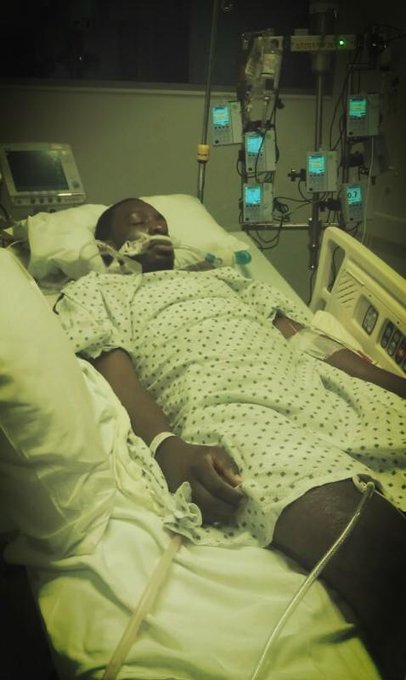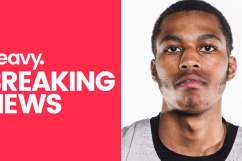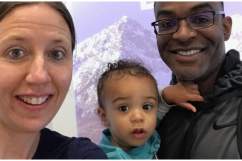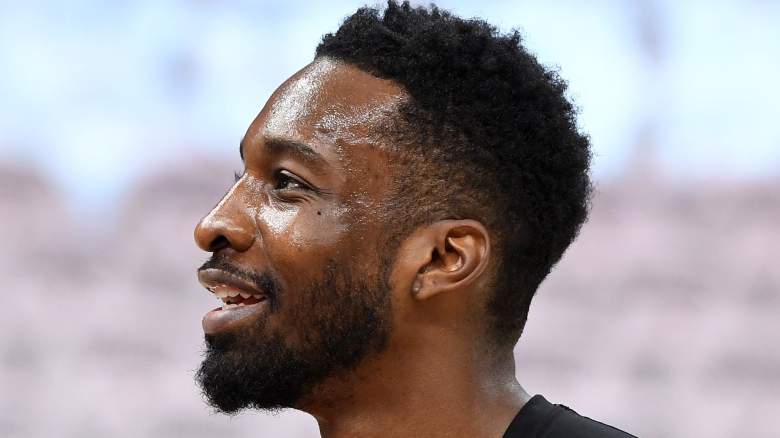
Getty Jeff Green, of the Cleveland Cavaliers, had heart surgery in 2011.
Cleveland forward Jeff Green has come a long way since 2011. Green, then 25 and in the prime of his career in Boston, was preparing to sign a one-year, $9 million contract with the Celtics. But during a routine physical prior to the contract being finalized, a doctor found an issue with his heart – an aortic aneurysm. Suddenly everything changed.
Green underwent open-heart surgery in January 2012 and missed the rest of the 2011-2012 season while recovering and rehabbing. Now, six years after the life-saving surgery, Green is a key player for the Cavaliers as they attempt to win the NBA Championship against the Golden State Warriors.
“I mean, I almost lost it all, and now to sit here in front of you guys, to talk about the NBA Finals and playing in it, I mean, I’ve been truly blessed to be able to step foot on this court, to play this game,” Green told reporters at a press conference two days before Game 1 of the NBA Finals.
Here’s what you need to know about Jeff Green’s heart surgery:
1. Most People With Aortic Aneurysms Only Find Out They Have One When the Aorta Ruptures, Which Is Usually Fatal
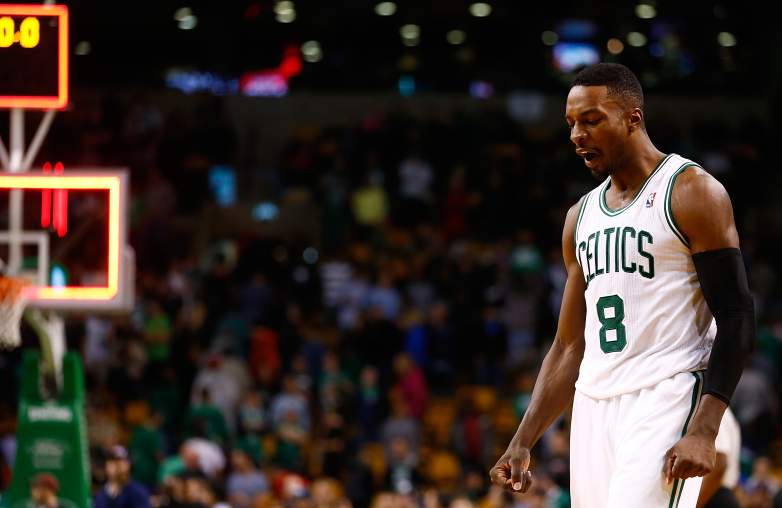
Jeff Green while with the Celtics.
The one-year contract Jeff Green with the Boston Celtics in December 2011 was voided. But that failed deal saved his life. Most people who have aortic aneurysms, like doctors found Green had, only find out when the aorta ruptures, which is typically fatal. The aortic aneurysm is described as a bulge in the critical vessel.
“An aortic aneurysm is a condition where the abdominal aorta, which is the largest blood vessel in the body, has a dilation, meaning the wall of the blood vessel thins and then balloons out,” Dr. Michael Kaplan told ESPN. “It’s more typical in older individuals with some sort of blood vessel disease, but we see it occasionally with people as young as Jeff, usually from other conditions.”
Kaplan told ESPN the condition could be congenital, or the result of another disease process such as Marfan syndrome. Green told the NBA Players’ Association what it was like to learn he had a heart problem:
I remember everything about what happened.
I went up to Boston on Dec. 9, I did the physical and then I went through two days of doctors examining the images from the stress test. And then on Dec. 11 or 12, that’s when the doctors told me that I needed the surgery. I’ll never forget—my best friend, Willie Jennings, was at every doctor’s appointment with me. And when I got the news, it was just a shock.
Once I found out I did have the aortic root aneurysm and played with it for several years, I definitely thought, Damn, what if something happened at that time? While I had been playing well in my first few years in the NBA, I definitely had my ups and downs—body fatigue, body shock. You could ask the Boston head strength and conditioning coach, Bryan Doo. During the 2010-11 season, I definitely had to take a couple of weeks off from doing any lifting or extra work on the court because my body was at a point where it was at shock. I was in major fatigue during the season.
My first question to the doctors when I heard the news was, “Will I ever be able to play again?” And they said that I had to have the surgery to play again, and I said, “If I don’t get it, what could happen?” I could play with it like I had done for the last couple of years, and nothing could happen, or I could play with it and possibly die on the court, like Reggie Lewis who played in Boston. Or I could die in any strenuous activity. The tissue could rupture and that could be it. So it was no question that I definitely had to get the surgery.
2. Green’s Heart Was Stopped for at Least an Hour During Life-Saving Surgery at the Cleveland Clinic & He Says the City Is Where He Was Given a ‘New Life’
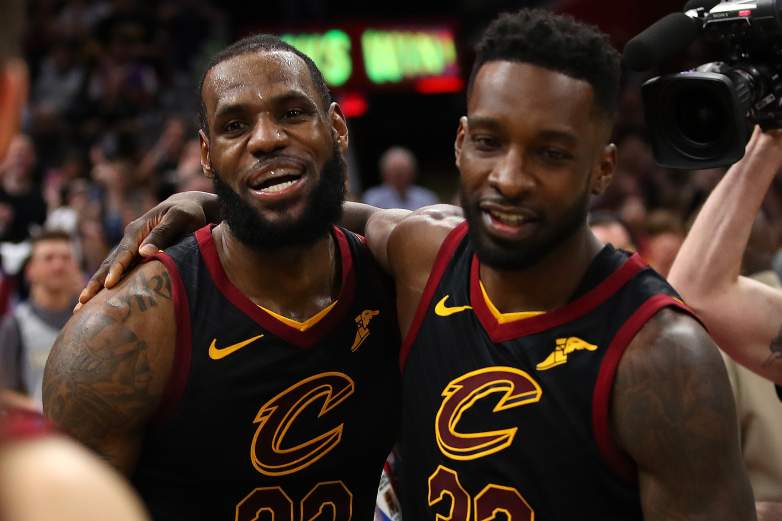
Jeff Green with LeBron James.
Jeff Green had his surgery at the Cleveland Clinic on January 9, 2012. One of the top heart surgeons in the world, Dr. Lars Svensson, performed his surgery. “Fortunately we operated on him before that (tear) happened,” Svensson told WOIO-TV in February. “When that does happen, saving patients is really difficult.”
During the procedure, Green’s heart was stopped for about an hour. It took five hours for the surgery to be completed. “To even say ‘his heart had to stop’, it’s surreal,” Green said with a laugh when Svensson told him that during an interview together earlier this year.
Green and Svensson have a special relationship. In 2013, Green dedicated a game-winning shot to his surgeon. The game was in Cleveland and Svensson was on the sideline. He went over and embraced him after the game.
“Just a year ago and a couple months, I was under that bright light with him working on me,” he told reporters. “It’s a blessing to be here. That was for him.”
When he signed with Cleveland during this off-season, he talked about how the city was the place where his life was saved, so it was fitting for him to play there. “When you think about it, it’s a place that gave me new life and hopefully this year it can give me a refresher on my career,” Green told Cleveland.com. “So I guess Cleveland is a city for me that brings a lot of newness to my life. We’ll see at the end of this year — in June — what that turns out to be.”
3. Kevin Durant Dedicated His 2011-12 Season to Green While He Spent the Year Away From Basketball Rehabbing & Completing His Degree at Georgetown
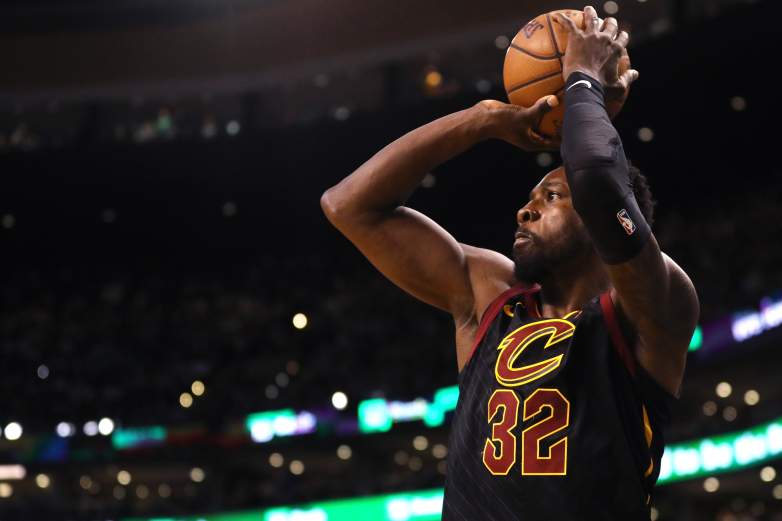
Jeff Green.
One of Green’s opponents in the NBA Finals, the Warriors’ Kevin Durant, had been his teammate in Seattle and Oklahoma City for several years. When Green’s 2011-2012 season was shut down because of the surgery, Durant dedicated his season to his friend.
“He’s like my brother. We came in together. We were drafted together. Me and Jeff [have] been through a lot. It hurt me for a while that he wasn’t there with us every single day,” Durant said at the time. “I dedicate the season to him,” Durant said. “I talk to him all the time. He supports me. I support him
Green, meanwhile, spent some time back in class, completing his degree at Georgetown University, where he had played college basketball. ” I was going back every summer to Georgetown prior to the surgery, and I had another two courses to finish that year. I was in the classrooms, I was doing the lectures two hours a day, and I was able to graduate in May with a degree in English and minor in theology. I walked, had the cap and gown, and my family was able to come, so it was a big moment,” he told the NBPA.
He wrote about the start of his rehab in a 2017 essay in The Players’ Tribune:
About a week into recovery, I headed to a physical rehab in Waltham, MA that the Celtics had set me up with. A lot of people there were recovering from various kinds of heart operations themselves — but I was the only person there under 60 years old. I remember this one older man and one older woman who were always on the treadmills next to me. They would be walking for 10-20 minutes at a time, no problem. At that time, in the first weeks after my operation, I could walk for about five minutes on the treadmill, but then I’d be exhausted. My doctor promised me that each day I would get a little bit better, but it was easy to get depressed about my progress. Sixty-year olds were lapping me on the treadmill.
Tyronn Lue, who was a coach with the Celtics while Green was playing there, was an important part of his rehab. Lue helped guide Green back on to the path in basketball shape, according to Cleveland.com.
Green eventually returned to the NBA, with the Celtics, after nine months of rehabilitation. He signed a four-year $36 million contract after being declared eligible to play again following the surgery and recovery. He has led somewhat of a journeyman career since then. The Celtics eventually traded Green to Memphis in 2015. In 2016, he was traded to the Los Angeles Clippers. He signed as a free agent with the Orlando Magic after that season and then signed with Cleveland.
While his road to the championship series has been long, Green has now emerged as a key part of the Cavaliers championship run, coming off the bench in Game 6 and starting in place of the injured Kevin Love during Game 7 of the Boston series.
4. He Says His Scar Reminds Himself What He Has Been Through & Has Motivated Him

Jeff Green.
Jeff Green wrote an essay in The Players’ Tribune last July about his open-heart surgery. He said his scar that runs the length of his chest is a reminder of what he has gone through and a motivational tool. He said he initially saw it as a negative, but embraced it.
“It’s been more than five years since January 2012 when I woke up in the hospital after my operation. There’s not a day that goes by where I don’t feel the scar on my body. It’s healed a lot, but it’s still the same size as it always was. When I run my hands along it, it still feels like the entirety of my chest. The texture of the scar, and its appearance — those things will never change much. It’s always going to be a part of me,” he wrote. “I might not pop my shirt off as much anymore. But everything changed when I decided to own that scar, not hide from it. It’s really amazing — the same thing that terrified me at first became the symbol for everything I’ve been through. Now, when I look in the mirror, I see Iron Man.”
That scar and the will to keep going has helped him reach the pinnacle of his career in Cleveland.
“I’m here, and I’ve battled. I’ve worked my ass off each day since Jan. 9, 2012, to get back on this court and now compete for a championship,” Green told reporters after helping the Cavaliers to a win over the Celtics in Game 7 of the Eastern Conference Finals. “I mean, I almost lost it all, and now to sit here in front of you guys, to talk about the NBA Finals and playing in it, I mean, I’ve been truly blessed to be able to step foot on this court, to play this game. Each day I give it my all, whether good or bad. I live with the results.”
LeBron James told reporters about Green, who he helped recruit to Cleveland, “This guy had open-heart surgery a few years ago. The game was basically taken away from him, and they said it’s possible you’ll never play the game of basketball again. The fact that he can put on a uniform every day and do the things that he does out on the floor — for him personally, it’s the cherry on top because the game was taken away from him.”
His coach, Tyronn Lue, told reporters, “I’m so happy for Jeff. I had him here when I coached in Boston, and just an all-around great guy, and I’m just happy for him and happy for the performance he had tonight.”
5. Green Donated a Special Pair of Air Jordan XXXI Shoes Commemorating His Surgery to the Cleveland Clinic Foundation & Been a Role Model to Kids Who Have Had Heart Procedures
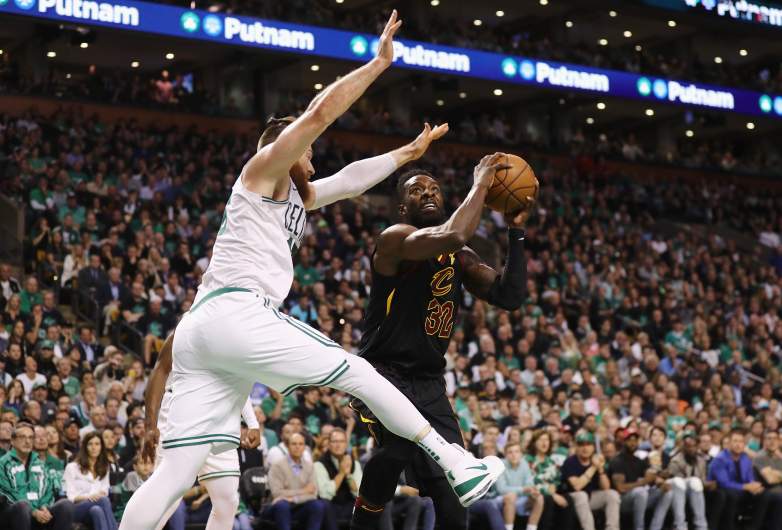
GettyJeff Green attempts a shot against the Celtics.
Along with his efforts to get back onto the court and eventually win an NBA title, Green has also used his experiences to help others, through charity work and through helping support and be a role model for others who have to undergo surgeries for heart conditions, especially children.
In 2017, Green auctioned off an autographed special edition pair of Air Jordan XXXI shoes that commemorated his life-saving surgery. The sale exclusive shoes raised money for the Cleveland Clinic, where he had his surgery.
“I’ve made helping young cardiac patients a big part of my life because when you don’t have to deal with heart issues, you’re blind to them,” he told the NBPA. The fact that I did have to go through that procedure, I’ve met so many kids—at NBA games and local hospitals—who have gone through that at an early age. And you only think, Wow. You bring a smile to their face and they look up to you, but they also do something special for you. To see the smiles on their faces as they go through the pain, go through the surgery, it definitely makes you appreciate everything you have a lot more. They’re so young and you wish that they didn’t have to go through that.
He added, “I did one event in Boston with the American Heart Association for some kids at the practice facility. One of the messages was they all said that they felt different, they all felt like they were viewed as being different. And I just told them, ‘Don’t view it like that. You’re still normal, but now you’re a superhero.'”
He wants others to know they should have their heart health checked. He said he wants, “to create awareness to athletes, children, parents, to have yourself checked. It can go unnoticed if you allow it to.”
